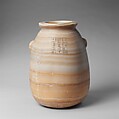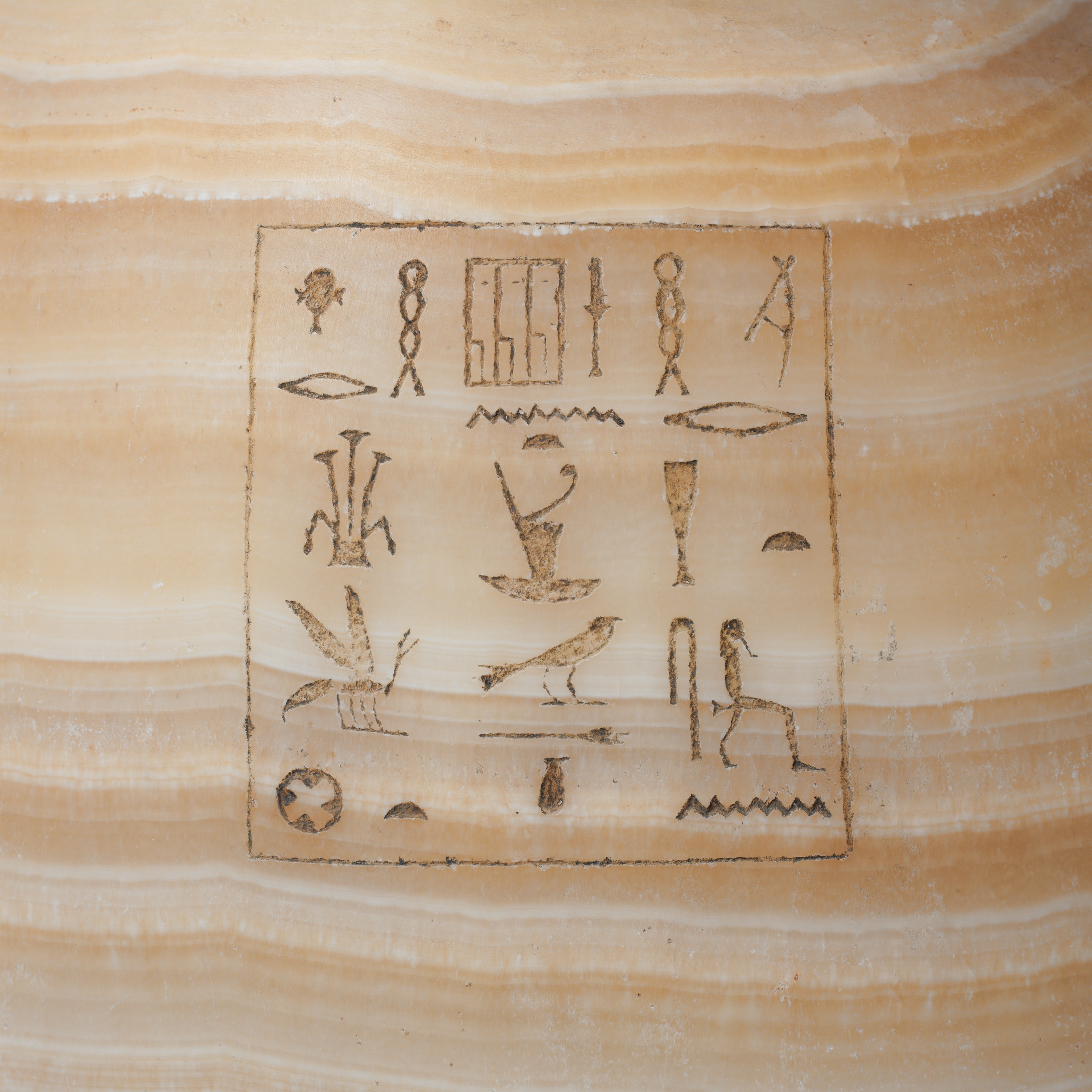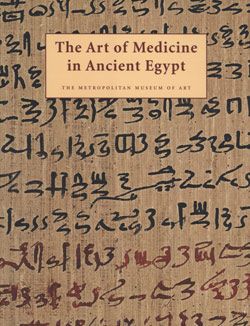Pharmaceutical jar
Saite Period
The incised inscription on this large jar identifies the contents of the vessel as "Special ointment of the Manager of the Red-Crown Enclaves and Chief Physician, Harkhebi." The man to whom the jar belonged probably lived in the Delta town of Buto; the "Red-Crown Enclaves" was an ancient area of that town, and his name, which means "Horus of Khemmis," refers to the site near Buto where the infant Horus was hidden by his mother, Isis, as described on the Metternich Stela (No. 51).
Ointments are frequently cited in medical papyri as a component in prescriptions, and the contents of this jar may have been employed by Harkhebi for that purpose. It is also possible that the jar was made for the physician's tomb, but this is less likely, since Harkhebi's name lacks the epithet "justified," which was usually appended to the name of the deceased.
This image cannot be enlarged, viewed at full screen, or downloaded.
This artwork is meant to be viewed from right to left. Scroll left to view more.




